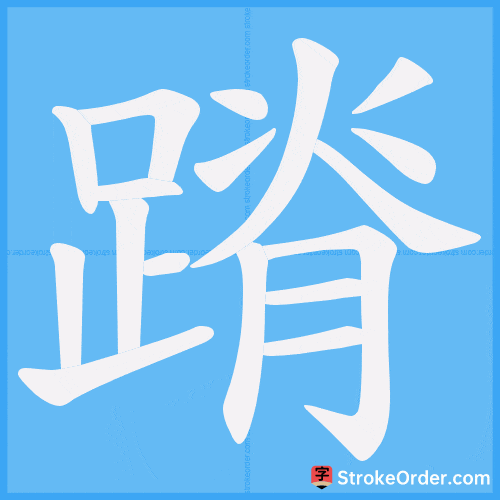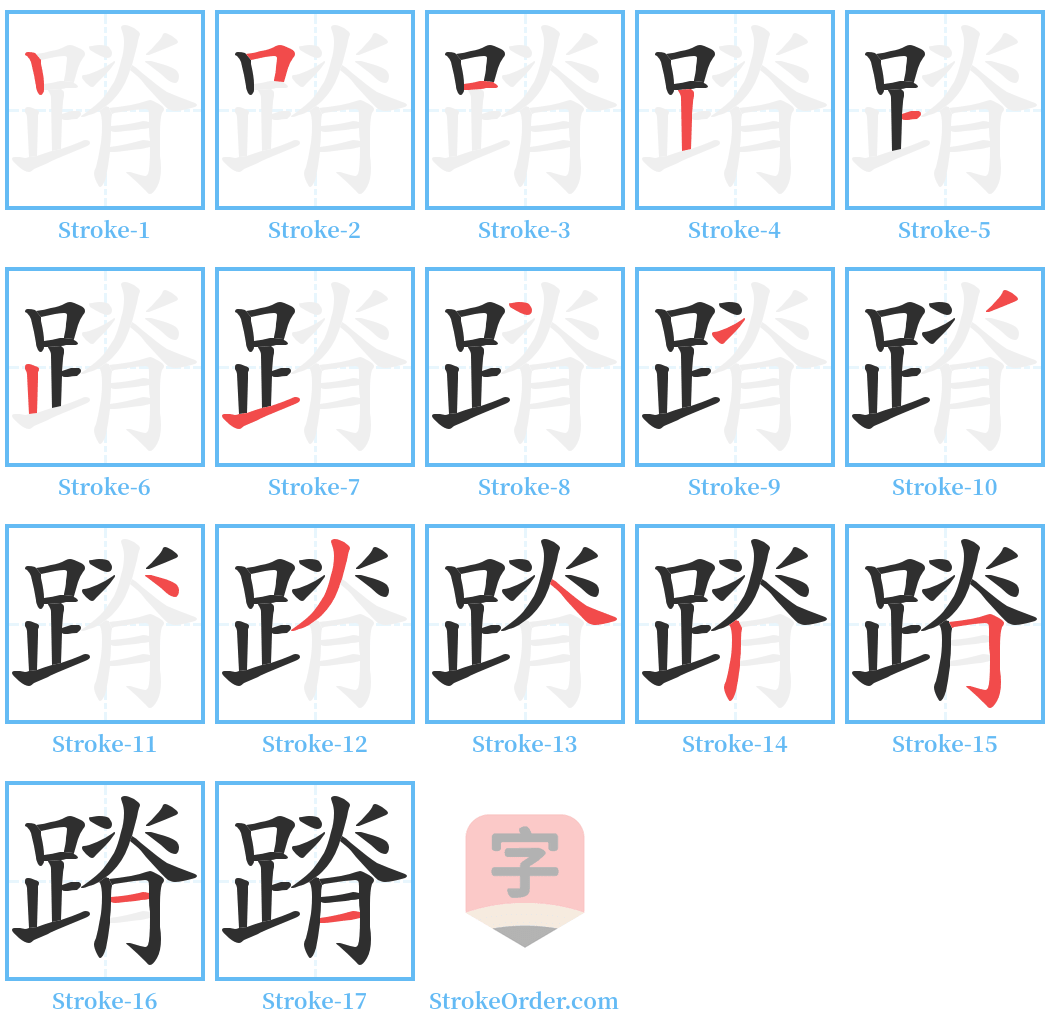蹐 Stroke Order
Animated Stroke Order of 蹐

Stroke Order Diagrams for 蹐

Information of 蹐
Pinyin
jí
Radical
足
Strokes
17 strokes
Usage
★★
Definition
蹐 [jí]
1. 后脚紧跟着前脚,用极小的步子走路。
(Walk in small pace; the back foot closely follows the front foot while walking with very small steps.)
2. 局促。
(Feel or show constraint.)
【本义】: 走小碎步,即后脚尖紧接着前脚跟。
(Original meaning: To walk in small, quick steps, where the tip of the back foot closely follows the heel of the front foot.)
【造字法】: 形声。从足,脊声。从“足”,表示与行有关。
(Character formation: Phono-semantic compound; the left part "足" indicates a relation to walking.)
引:
1. 《诗·小雅·正月》:谓地盖厚,不敢不蹐。
(In "The Book of Songs, Lesser Odes, January": Referring to the ground being thick, one dares not walk without caution.)
例:
如: 蹐蹐驰(小步急行); 蹐地跼天(谨慎小心,颇为恐惧的样子); 蹐步(小步); 蹐蹐(行走不稳便).
(Examples: Walking hurriedly with small steps; cautiously looking down while being fearful; taking small steps; stepping unsteadily.)
局促:
如: 蹐滞(局促板滞); 蹐跼(局促); 蹐促(局促不安).
(Examples: Feeling stiff and constrained; feeling constrained; feeling restless and constrained.)